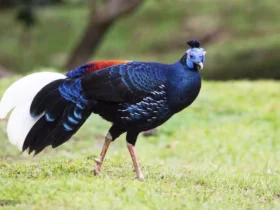Nestled amidst the breathtaking landscapes of the Eastern Himalayas, the Koklass Pheasant (Pucrasia macrolopha) reigns as a majestic jewel of the avian world. Known for its stunning plumage, elusive nature, and high-altitude habitats, this striking bird has captured the fascination of birdwatchers, nature enthusiasts, and conservationists alike. With its unique adaptations and cultural significance, the Koklass Pheasant holds a special place in the rich biodiversity of the Himalayan region.
Koklass Pheasant images
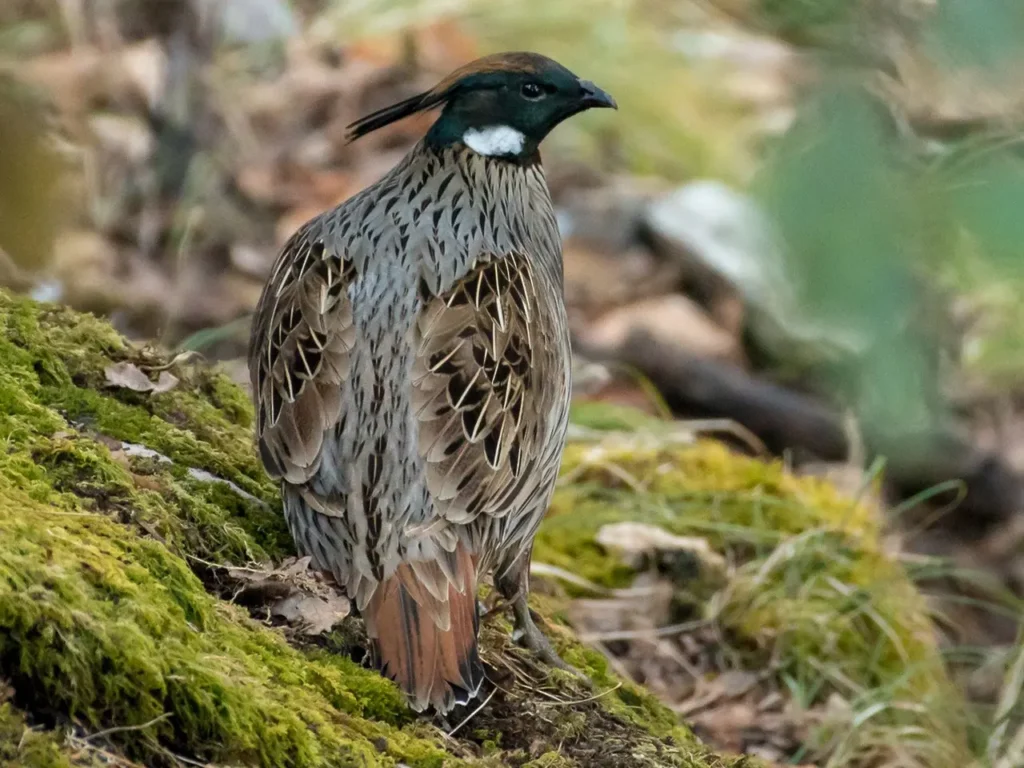
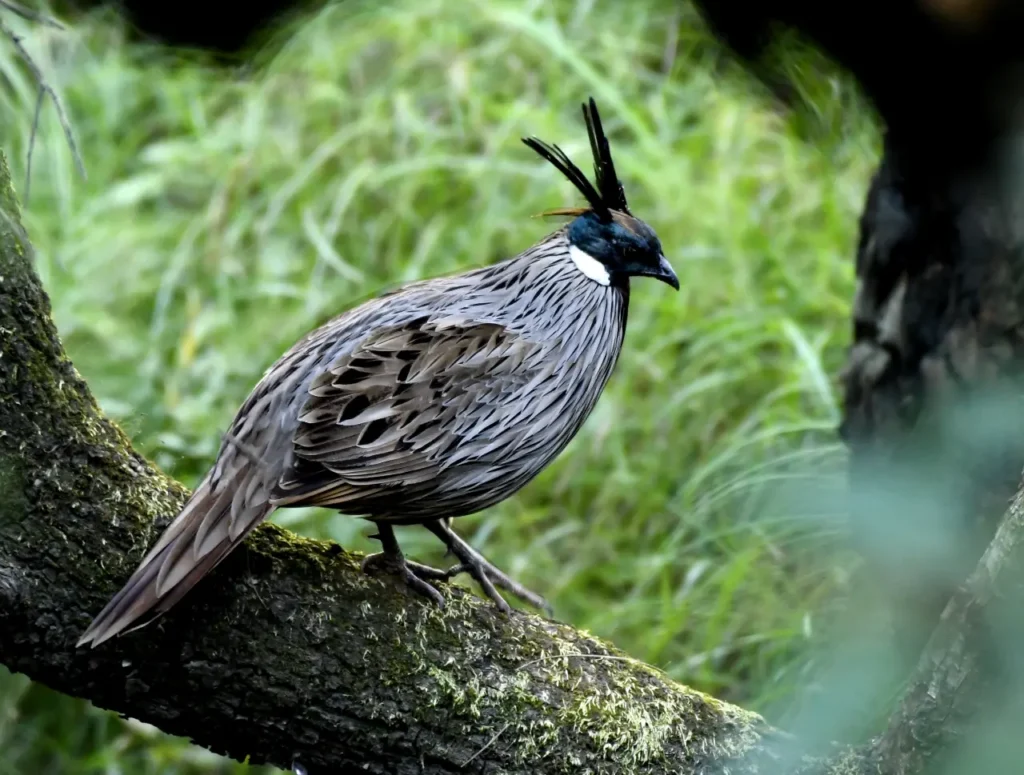
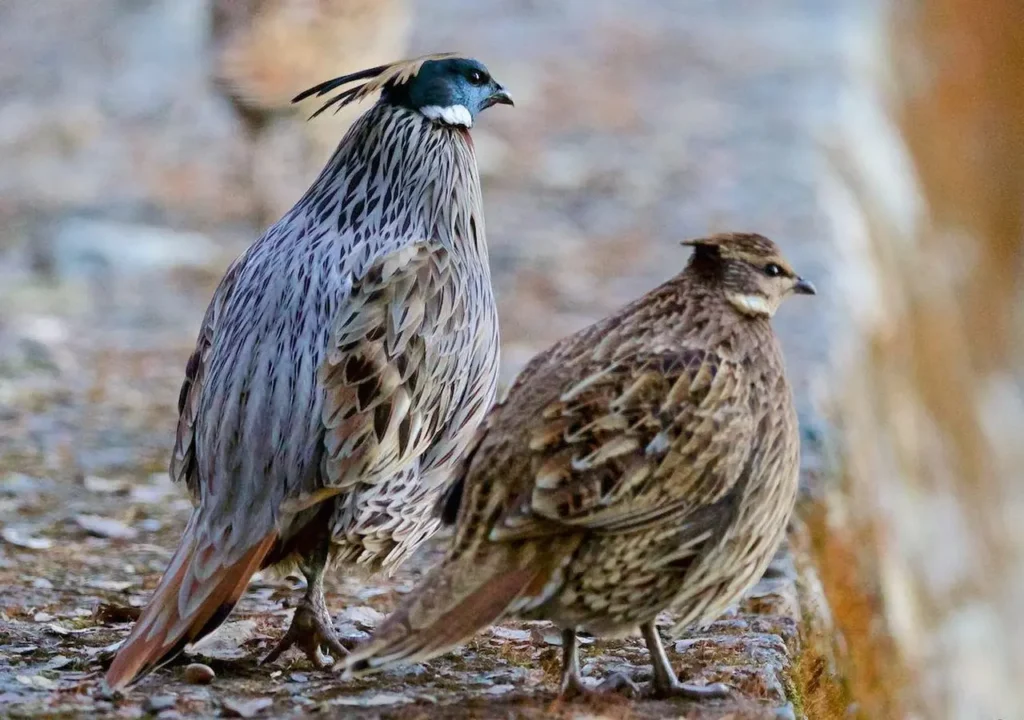
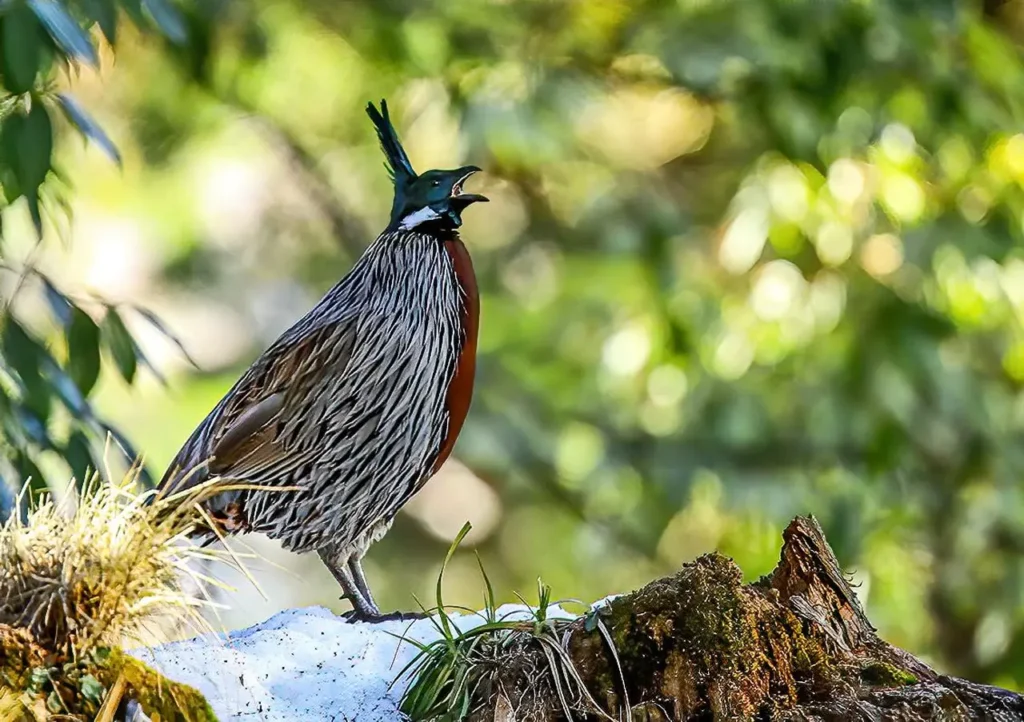
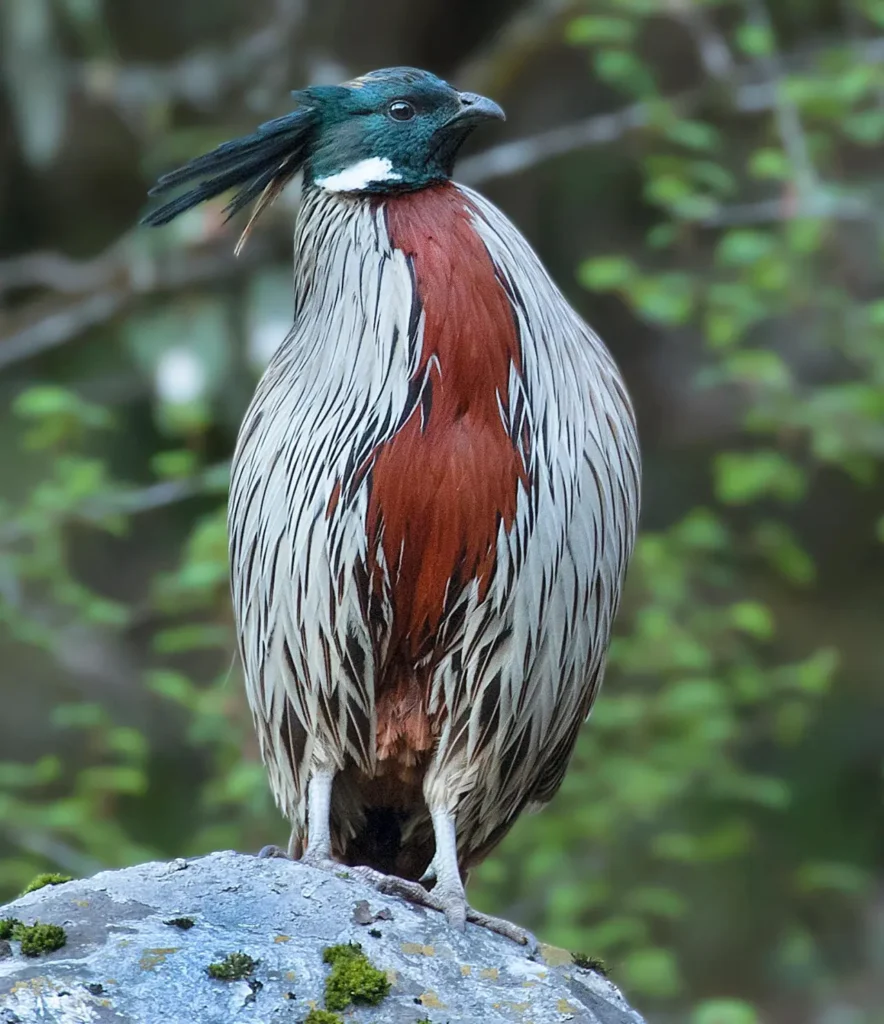
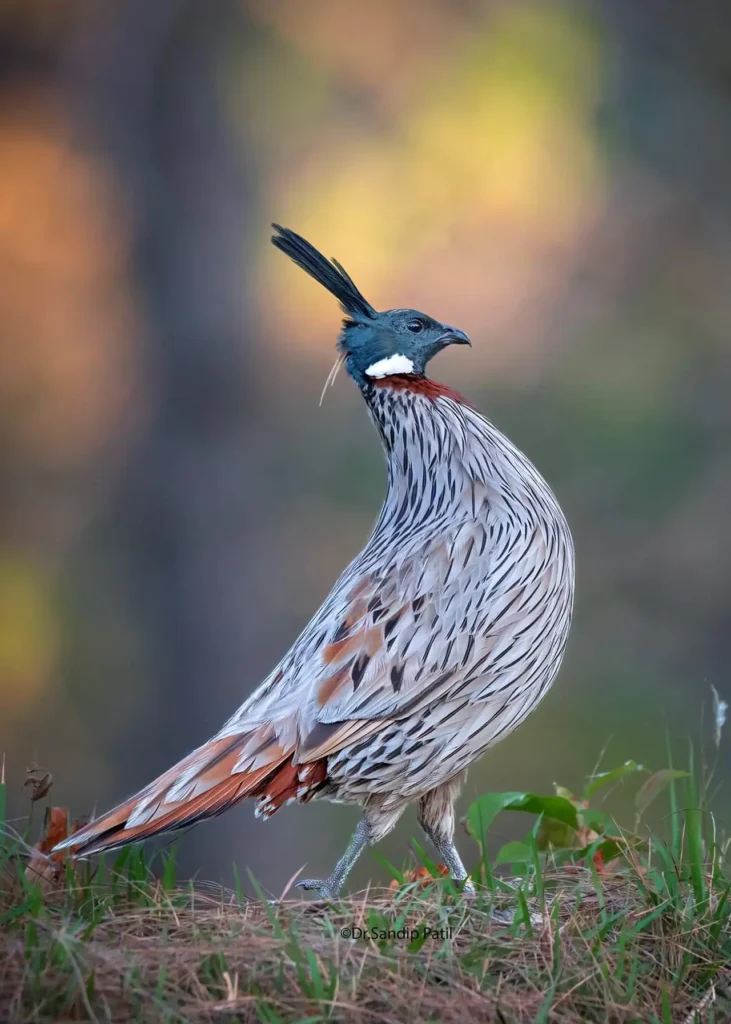
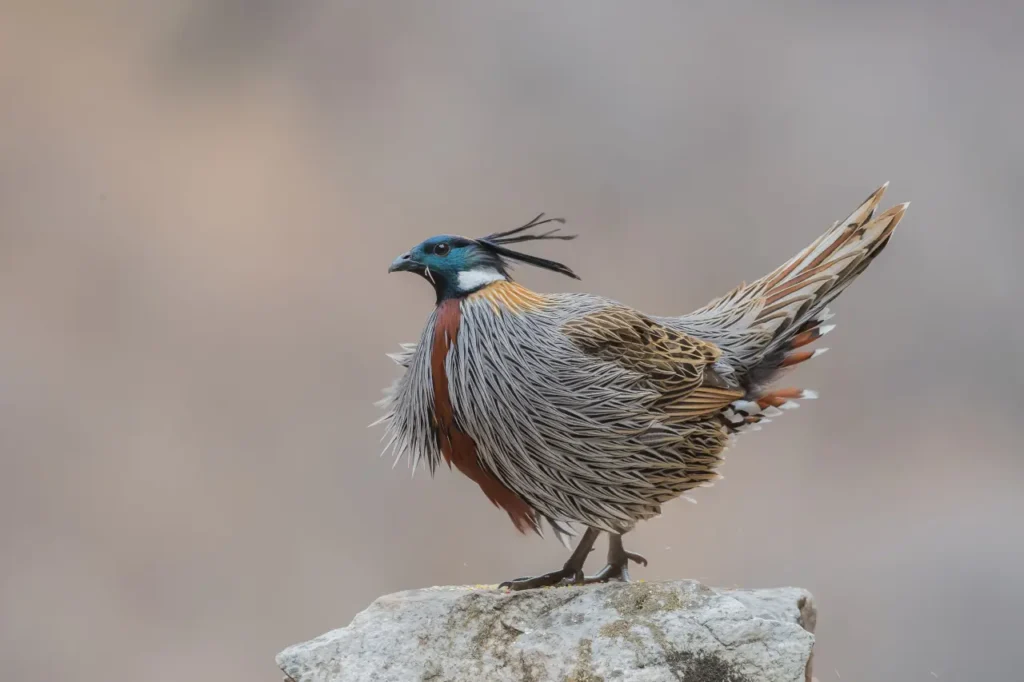
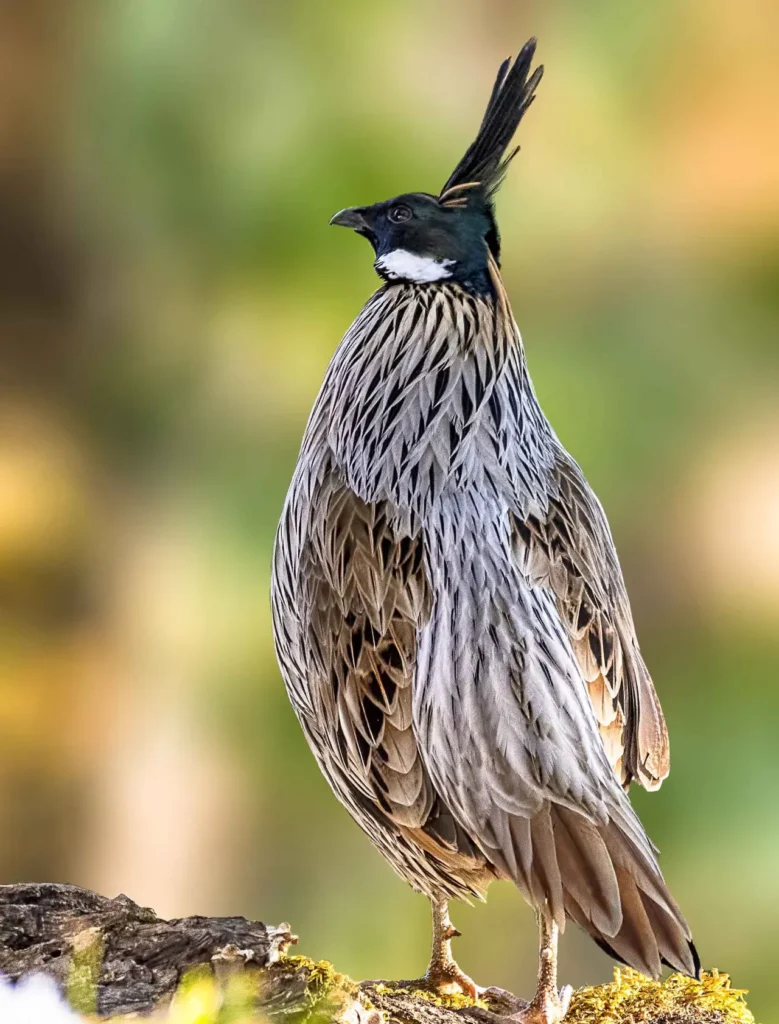

Physical Characteristics
The Koklass Pheasant is a large bird, with males measuring around 60-70 centimeters (24-28 inches) in length, while females are slightly smaller. The sexes also exhibit distinctive differences in their plumage. The male boasts a beautifully patterned plumage, featuring a rich combination of grays, browns, and blacks. The most prominent feature is its lustrous metallic green head with a contrasting white cheek patch. A striking white band adorns its neck, adding to its regal appearance.
On the other hand, the female’s plumage is more subdued, serving as excellent camouflage in their natural habitat. Her feathers are predominantly brown with intricate barring, which provides her with protection while nesting and rearing her young.
Habitat and Range
The Koklass Pheasant is a resident of the high-altitude forests in the Eastern Himalayas, extending from northern India through Nepal, Bhutan, and into parts of China and Myanmar. This species thrives in a variety of forest types, including coniferous and broadleaf forests, often found at elevations ranging from 1,800 to 4,500 meters (5,900 to 14,800 feet) above sea level.
Behavior and Diet
Koklass Pheasants are primarily ground-dwelling birds, using their strong legs and well-developed claws to forage for food on the forest floor. Their diet consists of a diverse range of plant matter, including seeds, fruits, buds, leaves, and tender shoots, as well as insects and small invertebrates. They are often found foraging in small groups, especially during the non-breeding season, and become more solitary during the breeding period.
Breeding and Reproduction
During the breeding season, which typically occurs from April to August, male Koklass Pheasants engage in elaborate courtship displays to attract females. The display includes fluffing their plumage, erecting their white neck bands, and making loud, resonating calls that echo through the mountainous terrain.
Once a pair forms a bond, the female constructs a simple nest in a concealed location on the ground, often among dense vegetation or under overhanging rocks. She lays a clutch of 6 to 12 eggs, which she incubates for about three weeks. The male plays a minimal role in incubation but may remain nearby to guard the nest and the surrounding territory.
Conservation Status and Challenges
While the Koklass Pheasant is not currently considered globally threatened, certain localized populations within its range face challenges due to habitat loss and hunting pressure. The destruction of forest habitats, whether for agricultural expansion or logging, poses a significant threat to the species’ long-term survival. Additionally, they are sometimes hunted for their meat and feathers, which further impacts their numbers in certain regions.
Conservation Efforts
To safeguard the Koklass Pheasant’s future, various conservation organizations and governments in the Himalayan region have initiated efforts to protect its habitats. These initiatives focus on habitat restoration, creating protected areas, and raising awareness about the importance of preserving the unique biodiversity of the Eastern Himalayas.
The Koklass Pheasant, with its alluring beauty and secretive lifestyle, exemplifies the allure of the Himalayan wilderness. As a symbol of the region’s ecological richness and cultural heritage, this magnificent bird deserves our admiration and protection. By cherishing and safeguarding its high-altitude habitats, we can ensure that the Koklass Pheasant continues to grace the Himalayan landscapes for generations to come, enchanting all who are fortunate enough to catch a glimpse of this regal jewel of the mountains.
